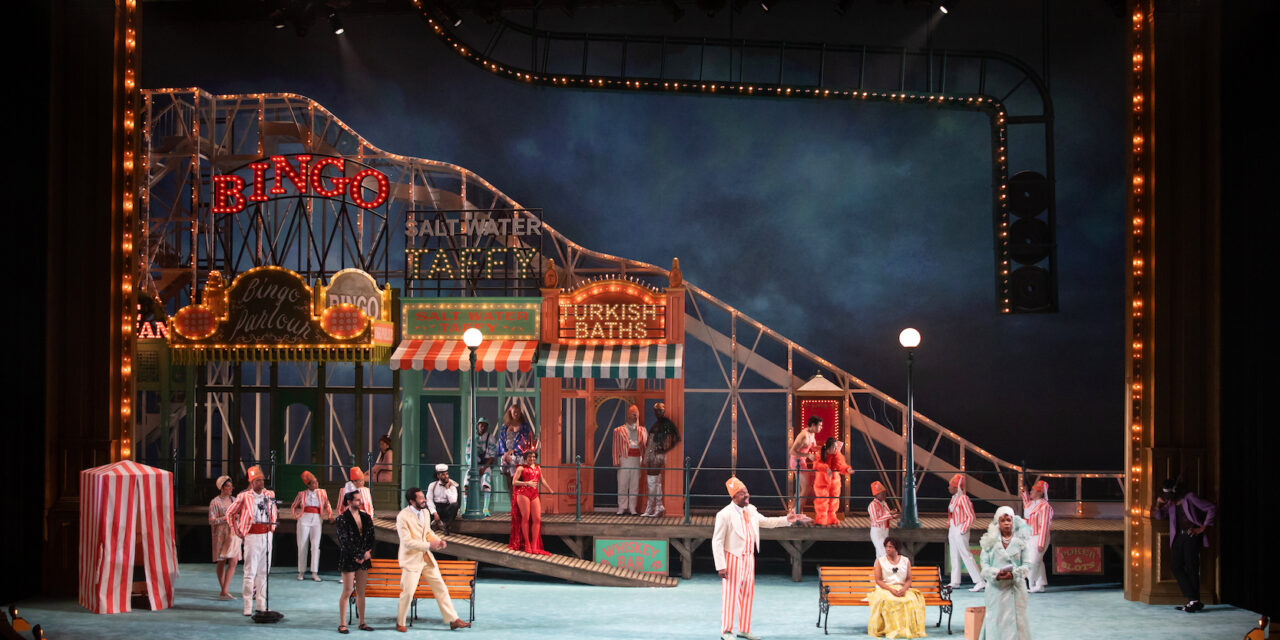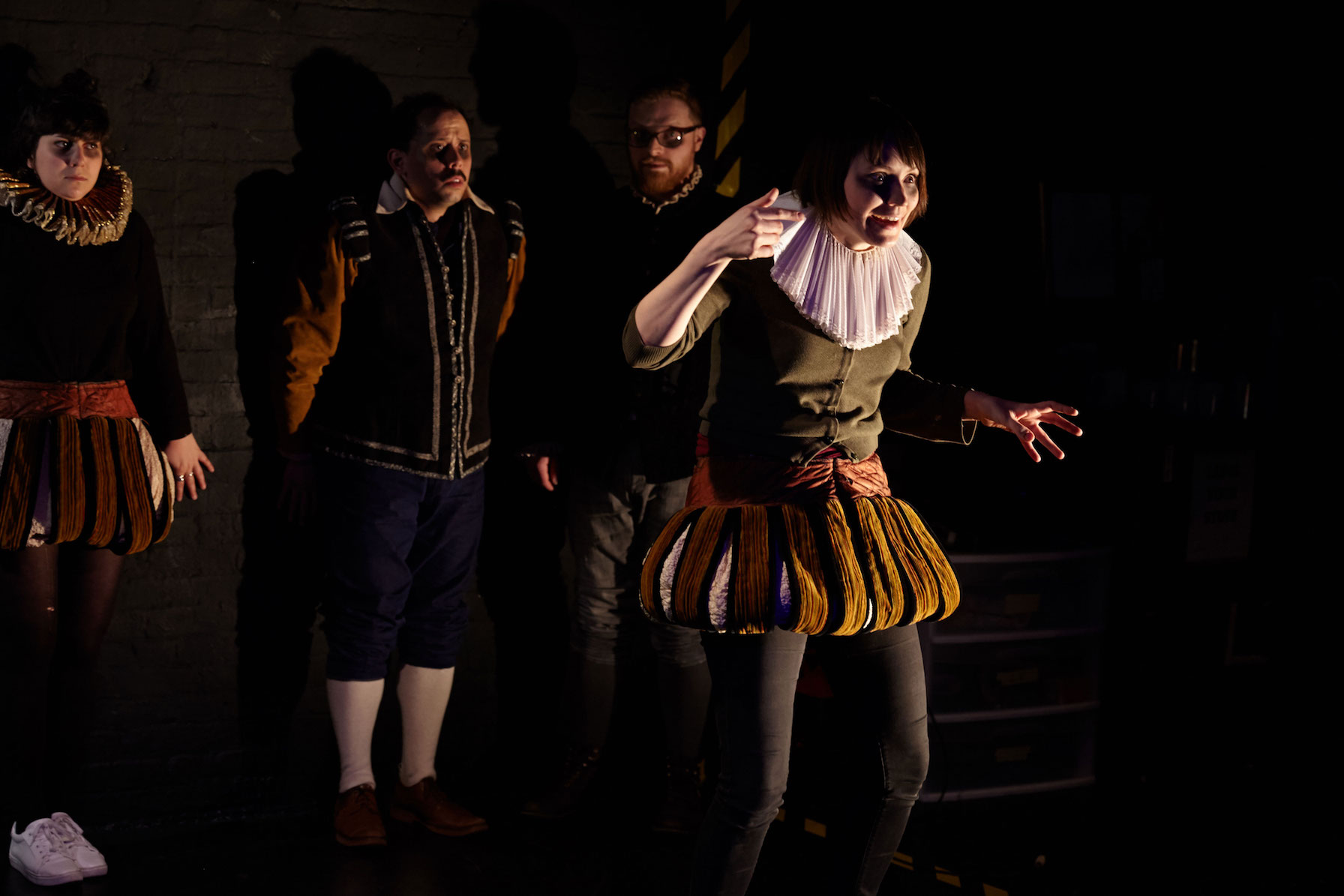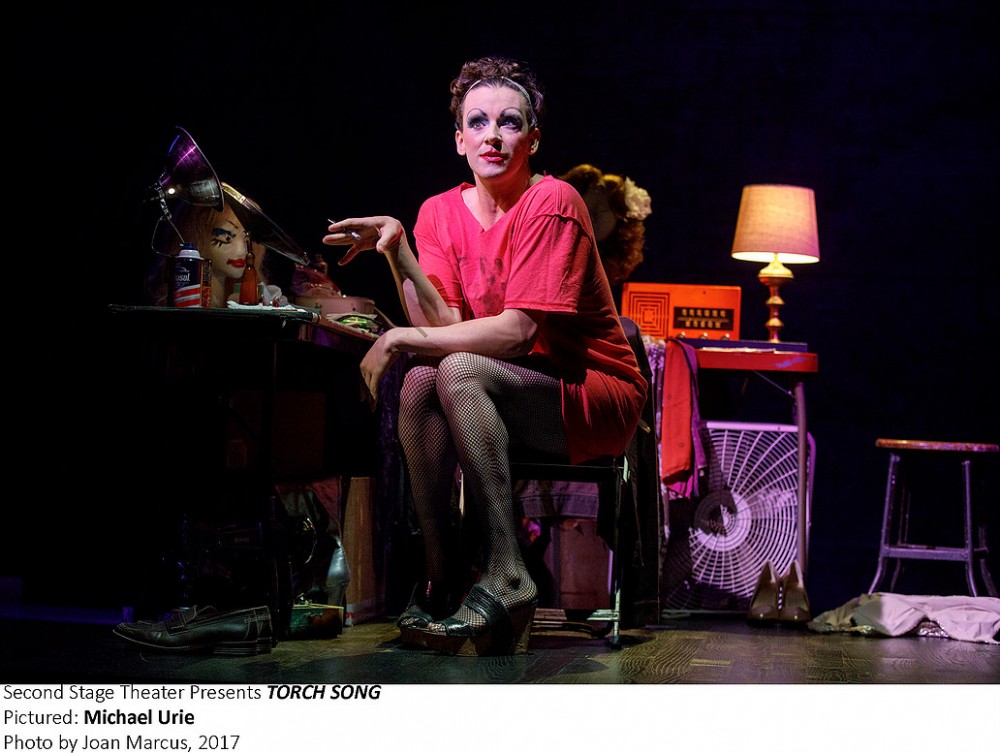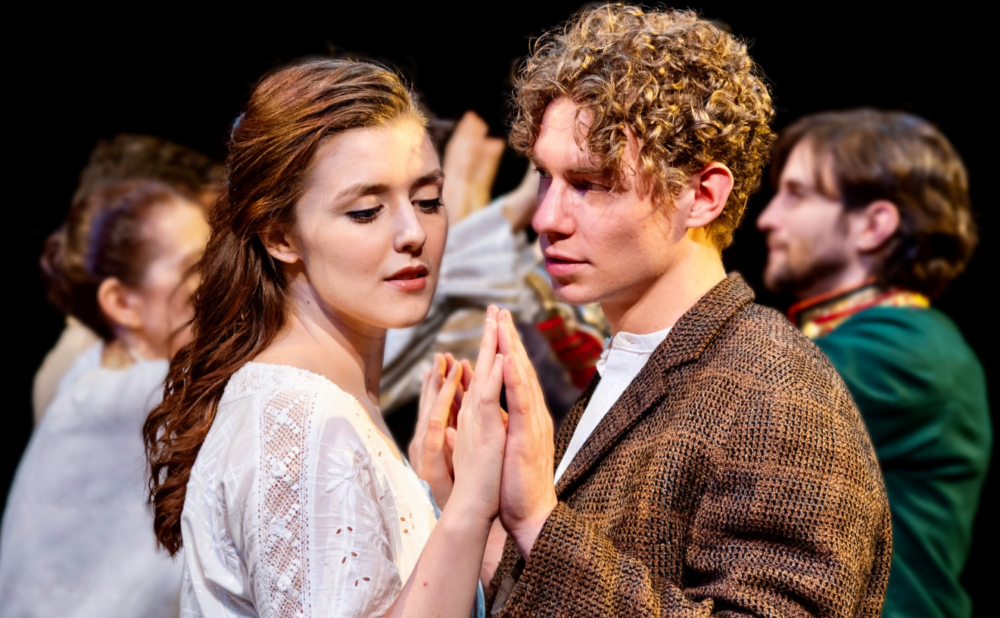By Carole Di Tosti . . .
Thorton Wilder’s Pulitizer Prize-winning The Skin of Our Teeth—currently in revival at Lincoln Center’s Vivian Beaumont Theater—presents the fate of the human race in three segments when the human family, represented by the Antrobuses (Greek for man or human), faces extinction. The first debacle is the ice age; the second is the great deluge; the third is a seven years’ war. The play leaves off in uncertainty, for surely humanity will continue to face threats of extermination and be able to shake them off, repair itself and scientifically progress to greater heights and lower depths in its struggle to survive as a species. Though Wilder leaves this conclusion uncertain through the character of Sabina (Gabby Beans), the very fact that the characters make it as far as they do is a hopeful witness of human resilience and tenacity.
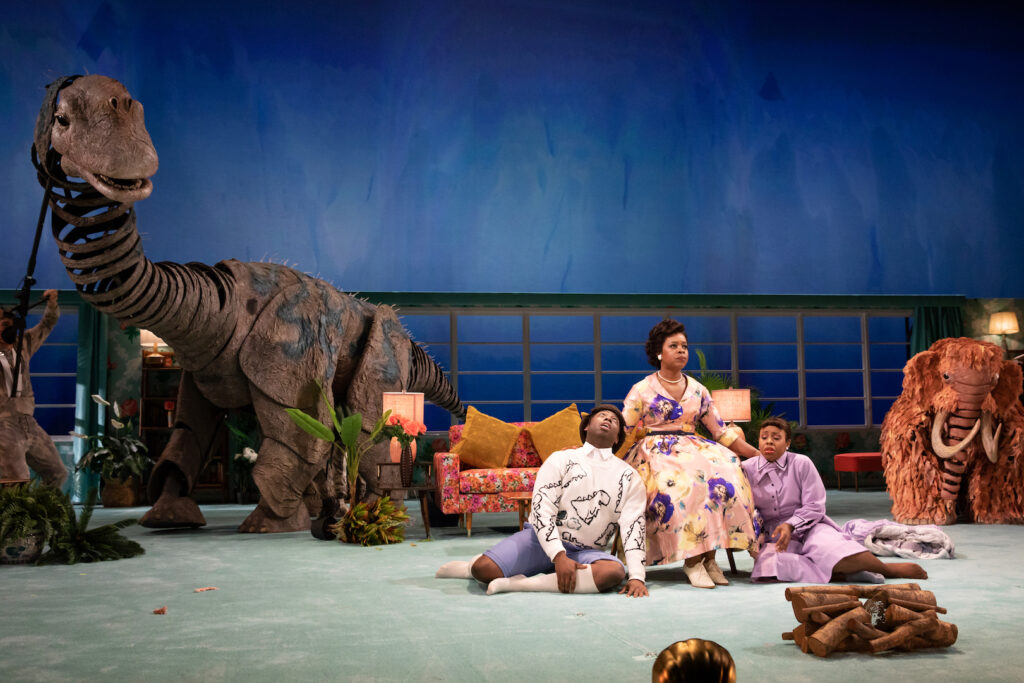
The production, one of spectacle and moment, whimsy and humor is acutely directed by Lileana Blain-Cruz for maximum effect. It succeeds in various instances, to be poignant and profound as the Antrobus family (James Vincent Meredith-Dad, Roslyn Ruff-Mom, Julian Robertson-Henry, Paige Gilbert-Gladys) and their maid Sabina (Gabby Beans)—one of the narrators who breaks the fourth wall to address the audience—claw their way through history to survive. These “everymen” and “every women” archetypes experience representative cataclysms, all the while confronting the questions about the human race and their place in history until the end of time.
Though Wilder references Bible figures like Cain, suggests Adam, Eve and Lilith (Lily Sabina) and the disasters that have foundations in tribal religious mythology (the great flood myth is recorded in most ancient cultures), other cataclysms are scientifically and historically referenced (the ice age, dinosaur extinction, seven year’s war between England and France). Wilder is intentionally out of chronological order, anachronistic, suggestive, melding various historical/cultural documents of literature and religion with scientific discovery. Throughout, the vital thread is humanity’s survival.
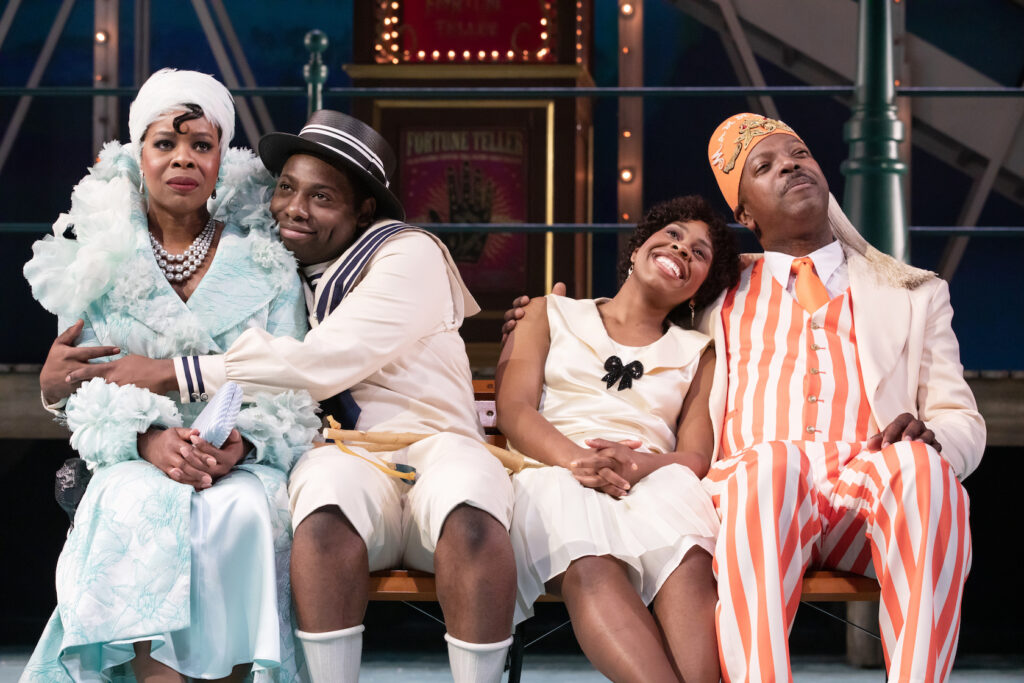

The questions the characters raise that float throughout each act are philosophical and moral. For example, is the human race worth saving from the struggles, trials and horrors which will continue to threaten both people and their environment? Should humanity just throw in the towel, lay down and refuse to repair itself or evolve technologically, artistically, scientifically? Given the rapacity and murderous ruthlessness of son Henry (aka the Biblical Cain, the spirit of murder in humanity), will the human race just exterminate itself with weapons of its own making? Or as humanity’s mother, Mrs. Antrobus suggests, will the family unit sustain the human species, enabling it to succeed in each progressive and evolving era?
Some scenes in this enlightened production are particularly adorable. The representative sentient beings of the ice age, the dinosaur and mammoth are the most lovable pets thanks to the brilliant puppeteers (Jeremy Gallardo, Beau Thom, Alphonso Walker Jr., Sarin Monae West). Unfortunately, Antrobus (James Vincent Meredith) tells the dinosaur and mammoth to leave the warmth of their Jersey home so he has room to take in refugees like prophet Moses, the ancient Greek poet Homer and the three Muses: Melete, “Practice,” Mneme, “Memory” and Aoide, “Song,” who would otherwise freeze to death.
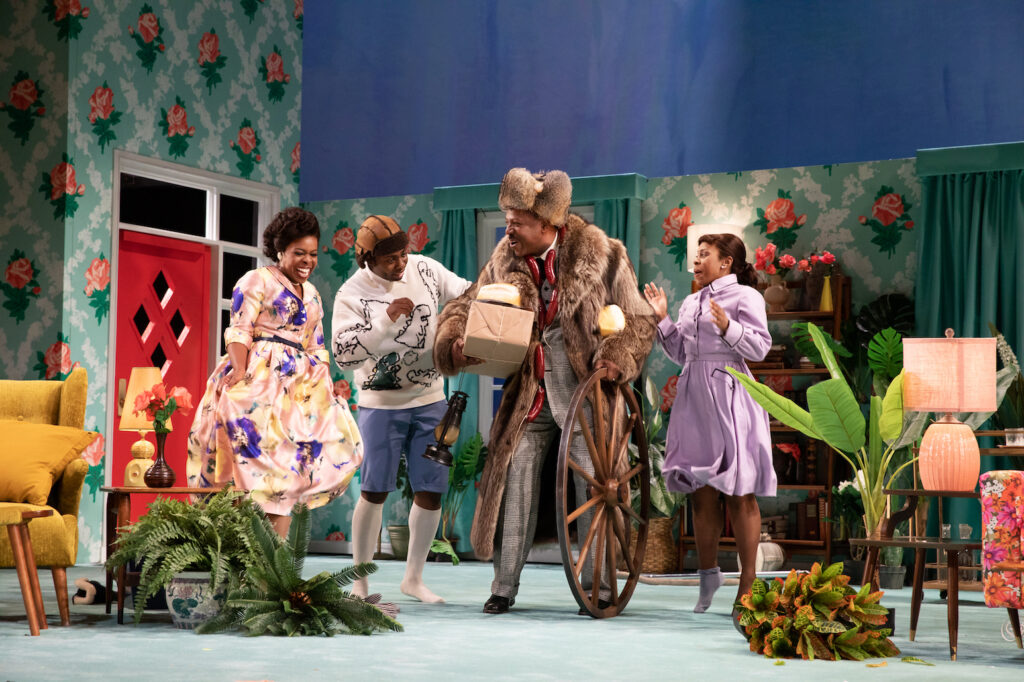

The dinosaur’s and mammoth’s expulsion is heartbreaking; the ice age destroys their kind. However, Wilder ties their extinction to necessity. To endure, humanity released some unique species, but from that arose incalculable value. In this instance the preservation includes the foundation of human laws of civilization, timeless poetry and the spirits who inspire art to soothe the collective human soul and engender hope and creativity.
The sounds of the ice shelf moving, the projection of the towers of ice and the smashing of the home are particularly compelling, as the Antrobus family and their maid and sometime object of Mr. Antrobus’ affections escape, “by the skin of their teeth.” Likewise, the sounding of the alarm of the impending storming deluge and the rising wind velocity and storm ferocity is eerily created with a crane-like device against the vibrant Atlantic City boardwalk set in Act II. As the family flees to a boat (intimating Noah’s Ark), the Fortune Teller (Priscilla Lopez), who has predicted humanity’s future, watches them escape.
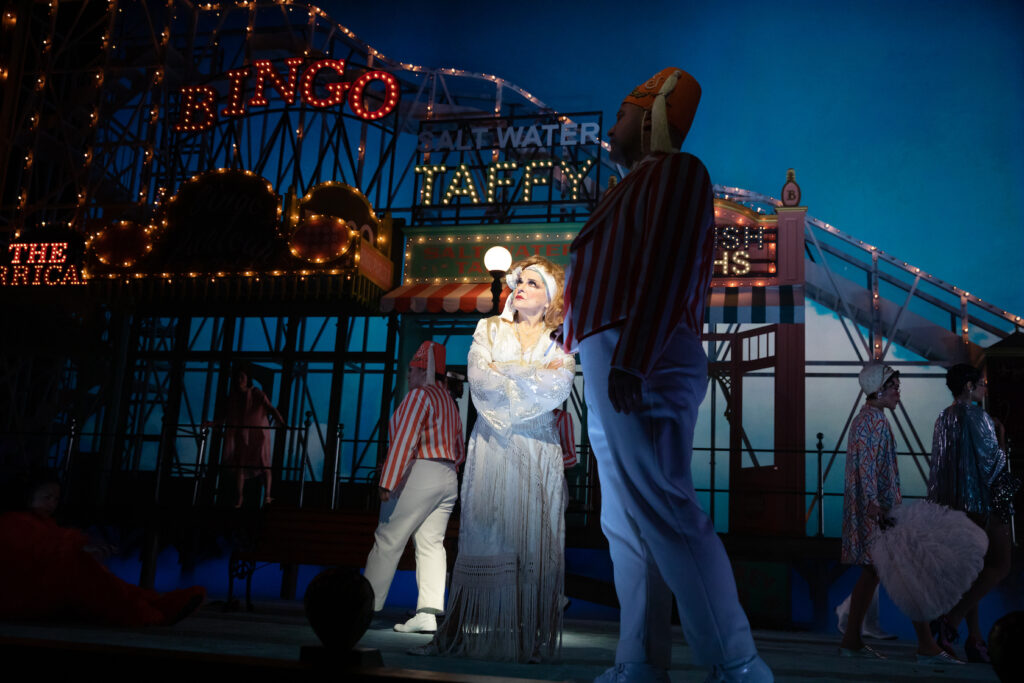

Director Lileana-Blain Cruz shepherds her fine, spot-on cast with aplomb to performances that never appear off focus or muted for Wilder’s unique characterizations. Her dynamic vision for the production is superbly rendered.
The fun of Lincoln Center’s presentation of The Skin of Our Teeth is in the set design, aptly configured by Adam Rigg, effervescent and vibrant in the first two acts, symbolic and moving in Act III. The colorful costumes by Montana Levi suggest Wilder’s anachronisms and situations for each act with humorous touches.
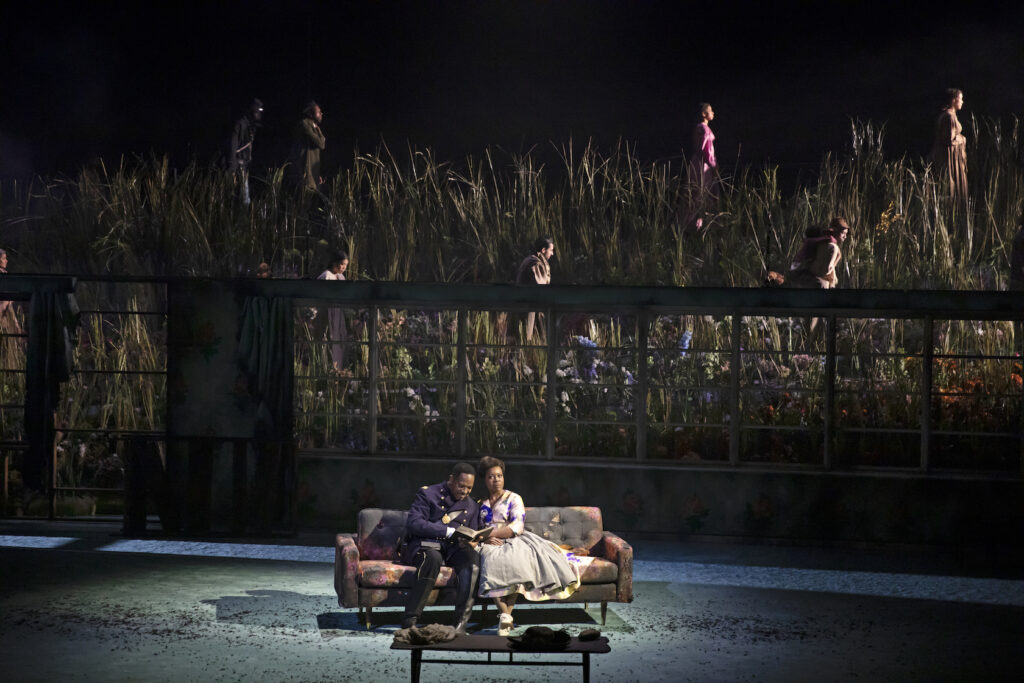

With Blanco, Yi Zhao’s accompanying lighting, Palmer Hefferan’s sound design and the integrated projections by Hannah Wasileski, the artistic technical team provides the canvas which sets off the events and the performances making them more striking. Most enjoyable are the expert puppeteers who made me fall in love with the animals and shed a tear at their demise. I am calling out these individuals again, BRAVO to Jeremy Gallardo, Beau Thom, Alphonso Walker Jr., Sarin Monae West.
Wilder’s The Skin of Our Teeth is an important revival. The work isn’t often produced because of its structure, fantastic elements and zaniness. As a result, this production is must-see.
The Skin of Our Teeth. Through May 29 at Lincoln Center Theater at the Vivian Beaumont (150 West 65th Street between Ninth and Tenth Avenues). www.lct.org
Photos: Julieta Cervantes


